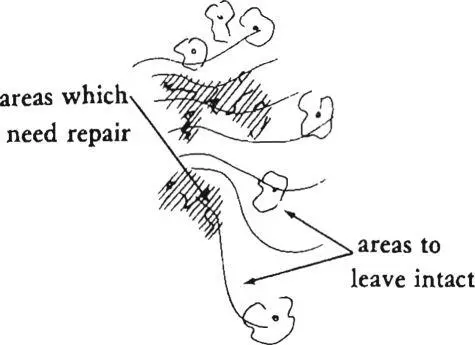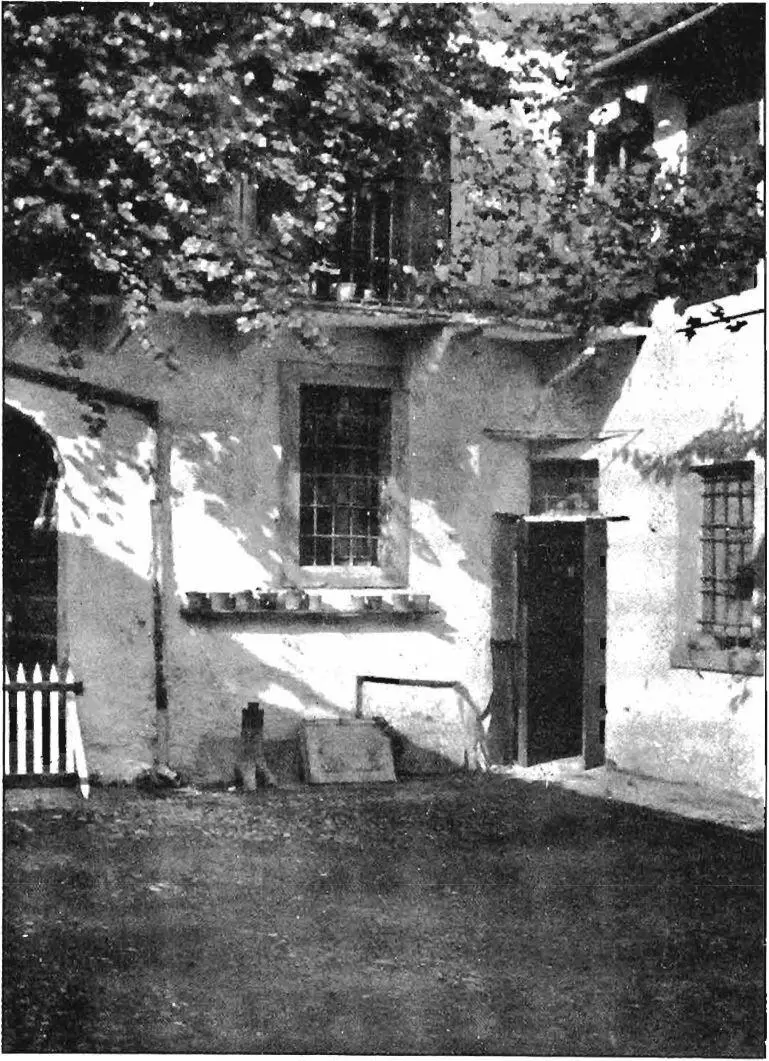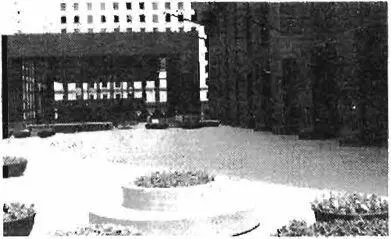Christopher alexander - A pattern language
Здесь есть возможность читать онлайн «Christopher alexander - A pattern language» весь текст электронной книги совершенно бесплатно (целиком полную версию без сокращений). В некоторых случаях можно слушать аудио, скачать через торрент в формате fb2 и присутствует краткое содержание. Жанр: Прочая научная литература, на английском языке. Описание произведения, (предисловие) а так же отзывы посетителей доступны на портале библиотеки ЛибКат.
- Название:A pattern language
- Автор:
- Жанр:
- Год:неизвестен
- ISBN:нет данных
- Рейтинг книги:3 / 5. Голосов: 1
-
Избранное:Добавить в избранное
- Отзывы:
-
Ваша оценка:
- 60
- 1
- 2
- 3
- 4
- 5
A pattern language: краткое содержание, описание и аннотация
Предлагаем к чтению аннотацию, описание, краткое содержание или предисловие (зависит от того, что написал сам автор книги «A pattern language»). Если вы не нашли необходимую информацию о книге — напишите в комментариях, мы постараемся отыскать её.
A pattern language — читать онлайн бесплатно полную книгу (весь текст) целиком
Ниже представлен текст книги, разбитый по страницам. Система сохранения места последней прочитанной страницы, позволяет с удобством читать онлайн бесплатно книгу «A pattern language», без необходимости каждый раз заново искать на чём Вы остановились. Поставьте закладку, и сможете в любой момент перейти на страницу, на которой закончили чтение.
Интервал:
Закладка:
But think now of the three-quarters of the available land which are not quite so nice. Since people always build on the one-quarter which is healthiest, the other three-quarters, already less healthy ecologically, become neglected. Gradually, they become
less and less healthy. Who is ever going to do anything on that corner of the lot which is dark and dank, where the garbage accumulates, or that part of the land which is a stagnant swamp, or the dry, stony hillside, where no plants are growing! 1
Not only that. When we build on the best parts of the land, those beauties which are there already—the crocuses that break through the lawn each spring, the sunny pile of stones where lizards sun themselves, the favorite gravel path, which we love walking on—it is always these things which get lost in the shuffle. When the construction starts on the parts of the land which are already healthy, innumerable beauties are wiped out with every act of building.
People always say to themselves, well, of course, we can always start another garden, build another trellis, put in another gravel path, put new crocuses in the new lawn, and the lizards will find some other pile of stones. But it just is not so. These simple things take years to grow—it isn’t all that easy to create them, just by wanting to. And every time we disturb one of these precious details, it may take twenty years, a lifetime even, before some comparable details grow again from our small daily acts.
If we always build on that part of the land which is most healthy, we can be virtually certain that a great deal of the land will always be less than healthy. If we want the land to be healthy all over—all of it—then we must do the opposite. We must treat every new act of building as an opportunity to mend some rent in the existing cloth; each act of building gives us the chance to make one of the ugliest and least healthy parts of the environment more healthy—as for those parts which are already healthy and beautiful—they of course need no attention. And in fact, we must discipline ourselves most strictly to leave them alone , so that our energy actually goes to the places which need it. This is the principle of site repair.
The fact is, that current development hardly ever does well by this pattern: everyone has a story about how some new building or road destroyed a place dear to them. The following news article from the San Francisco Chronicle (February 6, 1973) headlined ccAngry Boys Bulldoze House” struck us as the perfect case:
Two 13-year old boys—enraged over a swath of suburban homes being built in the midst of their rabbit-hunting turf—were arrested
5 10104 SITErepair
after they admitted flattening one of the homes with a purloined bulldozer.
According to the Washoe County sheriff’s office, the youths started up a bulldozer used at the construction site about four miles north of Reno, then plowed the sturdy vehicle through one of the homes four times late last Friday night.
The ranch-style house—which was nearly completed—was a shambles when workmen arrived yesterday morning. Damage was estimated at $7800 by the contractor. One of the boys told authorities the home along with several others nearby was ruining a “favorite rabbit-hunting preserve.”
The two boys were booked on charges of felonious destruction.
The idea of site repair is just a beginning. It deals with the problem of how to minimize damage. But the most talented of traditional builders have always been able to use built form, not only to avoid damage, but also to improve the natural landscape. This attitude is so profoundly different from our current view of building, that concepts which will help us decide how to place buildings to imfrove the landscape don’t even exist yet.
Therefore:
On no account place buildings in the places which are most beautiful. In fact, do the opposite. Consider the site and its buildings as a single living eco-system. Leave those areas that are the most precious, beautiful, comfortable, and healthy as they are, and build new structures in those parts of the site which are least pleasant now.

5 11
BUILDINGS
❖ * *
Above all, leave trees Intact and build around them with great care—tree places (171); keep open spaces open to the south of buildings, for the sun—south facing outdoors (105); try, generally, to shape space in such a way that each place becomes positive, in its own right—positive outdoor space (106). Repair slopes if they need it with terraced slope (169), and leave the outdoors in its natural state as much as possible—garden growing wild (172). If necessary, push and shove the building into odd corners to preserve the beauty of an old vine, a bush you love, a patch of lovely grass—wings of light ( 107) , LONG THIN HOUSE ( 109) . . . .
105 SOUTH FACING OUTDOORS**

513
. . . within the general ideas of location which site repair (104) creates, this pattern governs the fundamental placing of the building and the open space around it with respect to sun.
❖ *$• ❖
People use open space if it is sunny, and do not use it if it isn’t, in all but desert climates.
This is perhaps the most important single fact about a building. If the building is placed right, the building and its gardens will be happy places full of activity and laughter. If it is done wrong, then all the attention in the world, and the most beautiful details, will not prevent it from being a silent gloomy place. Thousands of acres of open space in every city are wasted because they are north of buildings and never get the sun. This is true for public buildings, and it is true for private houses. The recently built Bank of America building in San Francisco—a giant building built by a major firm of architects—has its plaza on the north side. At lunchtime, the plaza is empty, and people eat their sandwiches in the street, on the south side where the sun is.
 |
| North facing outdoors. |
Just so for small private houses. The shape and orientation of lots common in most developments force houses to be surrounded by open space which no one will ever use because it isn’t in the sun.
A survey of a residential block in Berkeley, California, confirms this problem dramatically. Along Webster Street—an east-west street—I 8 of 20 persons interviewed said they used only the sunny part of their yards. Half of these were people living on
the north side of the street —these -people did not use their backyards at all, but would sit in the front yard, beside the sidewalk, to be in the south sun. The north-facing back yards were used primarily for storing junk. Not one of the persons interviewed indicated preference for a shady yard.
 |
| Favorite outdoor places to the south. |
The survey also gave credence to the idea that sunny areas won’t be used if there is a deep band of shade up against the house, through which you must pass to get to the sun. Four north facing backyards were large enough to be sunny toward the rear. In only one of these yards was the sunny area reported as being used—in just the one where it was possible to get to the sun without passing through a deep band of shade.
Читать дальшеИнтервал:
Закладка:
Похожие книги на «A pattern language»
Представляем Вашему вниманию похожие книги на «A pattern language» списком для выбора. Мы отобрали схожую по названию и смыслу литературу в надежде предоставить читателям больше вариантов отыскать новые, интересные, ещё непрочитанные произведения.
Обсуждение, отзывы о книге «A pattern language» и просто собственные мнения читателей. Оставьте ваши комментарии, напишите, что Вы думаете о произведении, его смысле или главных героях. Укажите что конкретно понравилось, а что нет, и почему Вы так считаете.












